Triumph Bonneville - your in-depth guide to Britain’s definitive retro bike family, including current models, and past editions
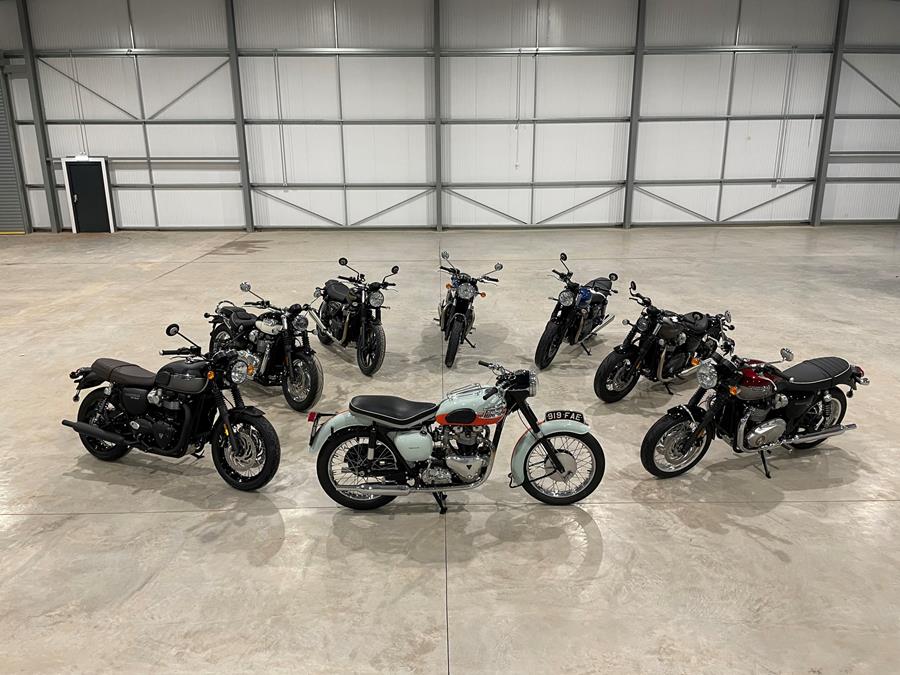
The Triumph Bonneville family is one of the most famous collections of motorcycles ever produced, by any manufacturer. Designed and built by British brand, Triumph, it first appeared in 1958 as a T120 design, named after the manufacturer’s 214mph land speed record set in 1956 at the Bonneville Salt Flats.
The original T120 was the final Triumph to be designed by Edward Turner, and went into production in 1959. It inspired a new generation of teenage café racers – all spurred on by the brand’s sporting success. In 1969, John Hartle took victory at the gruelling Isle of Man TT on a Bonneville, averaging more than 100mph around the Manx course.
- Related: London’s Ace Cafe through the years
Despite a sporty start, the Bonneville has grown into a gentle, easy-going roadster – still sharing a similar silhouette and colour options to those first bikes launched over 65-years-ago. All models are currently powered by parallel twin engines, with subtle liquid cooling, and cooling fins on the head for that authentic retro appeal.
In 2025, Triumph have four models in their line-up using the Bonneville name – the £11,995 Bonneville T120, £9595 Bonneville T100, £13,195 Bonneville Bobber, and £13,195 Bonneville Speedmaster.
Other models sharing the engines with the Bonneville family also include the Thruxton and Scrambler 1200s – which have both used a version of the T120’s 1200cc motor. The Thruxton was discontinued at the end of 2024, however a pair of Scramblers remain.
The original Bonneville was produced until 1983, when Triumph went into receivership. The T120 name re-entered Triumph’s range in 2016 and remains there today.
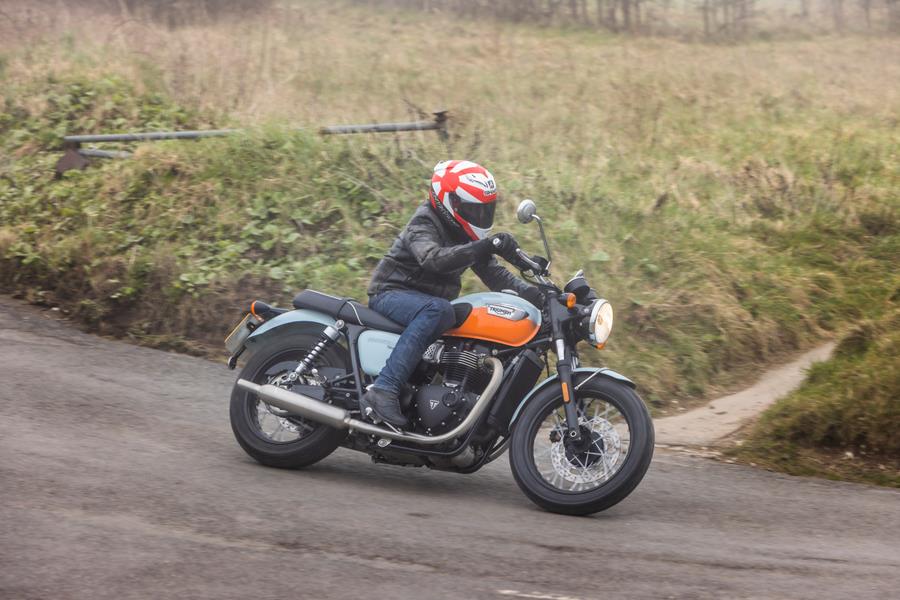
Since the millennium, the Bonneville range has undergone a number of engine updates, and styling redesigns – with the bikes remaining popular with both experienced and newer riders wanting to buy into the famous name.
Triumph Bonnevilles over the years
Jump to:
- Triumph Bonneville 900 (2000-2016)
- Triumph Bonneville America (2002-2015)
- Triumph Bonneville America LT (2014-2016)
- Triumph Bonneville T120 (2016-on)
- Triumph Bonneville T100 (2017-on)
- Triumph Bonneville Bobber (2017-on)
- Triumph Bonneville Bobber Black (2018-2020)
- Triumph Bonneville Speedmaster (2002-2011)
- Triumph Bonneville Speedmaster (2011-2017)
- Triumph Bonneville Speedmaster (2018-on)
Triumph Bonneville 900 (2000-2016) overview and key specs
The 900 model marked the resurrection of the Bonneville name, before expanding to the T100 in 2002. It started with a lethargic 790cc parallel twin engine, and was at first considered a rival to Harley-Davidson’s 883 Sportster.
Read our in-depth Triumph Bonneville 900 (2000-2016) review.
Triumph Bonneville America (2002-2015) overview and key specs
The Triumph Bonneville America was designed to crack the massive American motorcycle market, hence why it became the longest and lowest Triumph to roll off a production line since the firm was born in 1902.
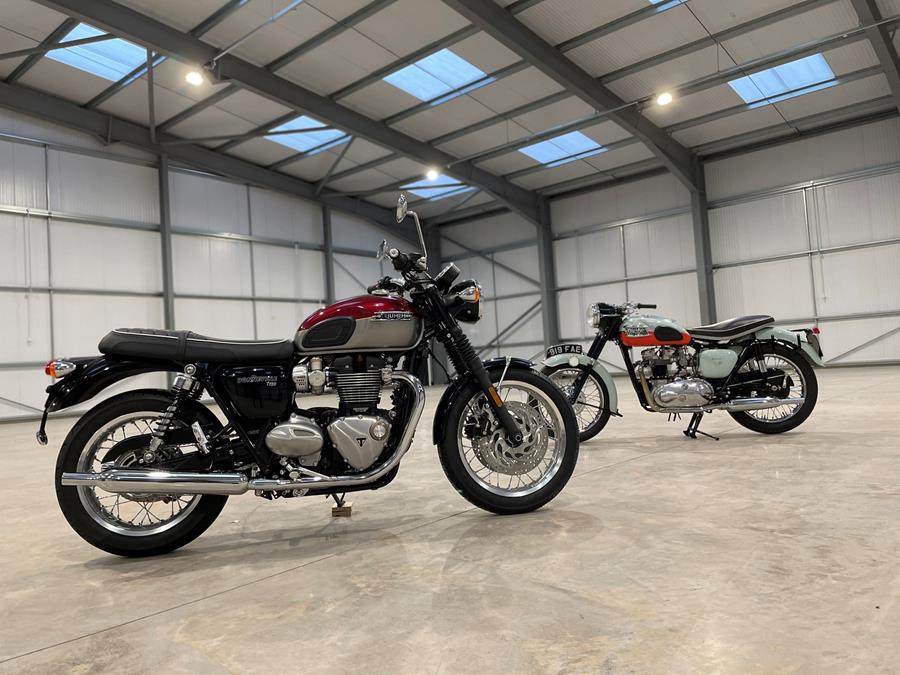
It was designed for covering big miles on wide-open highways, rather than twisty English back roads.
Read our in-depth Triumph Bonneville America (2002-2015) review.
Triumph Bonneville America LT (2014-2016) overview and key specs
With an 865cc air-cooled parallel twin engine, the LT was designed to be a smaller, more manageable version of a bagger. Accessories included large clear screens and leather saddlebags, and the bike was easier to ride than its cruiser competition.
Read our in-depth Triumph Bonneville America LT (2014-2016) review.
Triumph Bonneville T120 (2016-on) overview and key specs
The 1200cc parallel-twin-powered Triumph Bonneville T120 remains in the firm’s current range (as of 2025) and sits somewhere between simplistic retros like Royal Enfield’s Interceptor 650, and modern nakeds, such as the BMW R12 nineT, and the Yamaha XSR900.
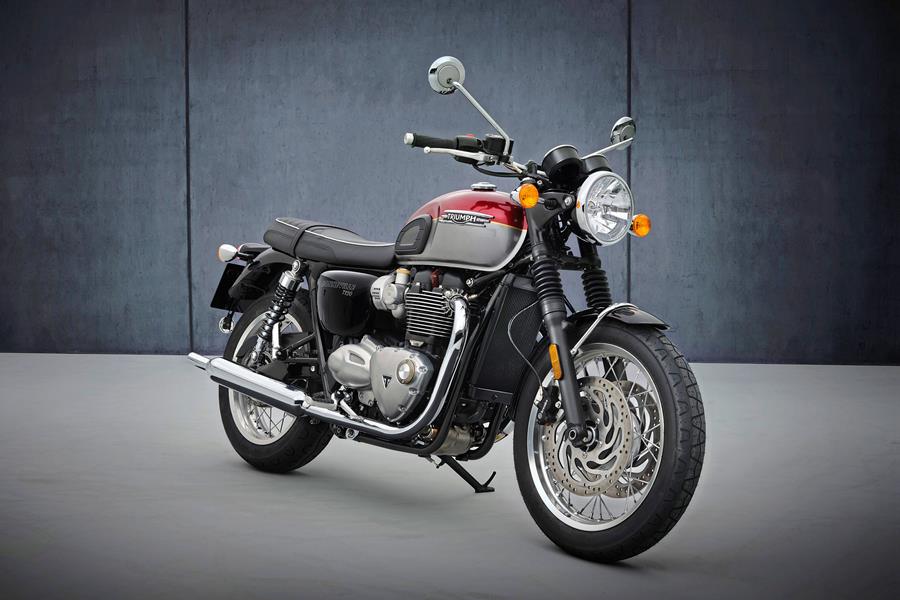
It blends styling inspired by the original 1958 design, with up-to-date technology, rideability and accessible performance.
Read our in-depth Triumph Bonneville T120 (2016-on) review.
Triumph Bonneville T100 (2017-on) overview and key specs
The Bonneville T100 sits between the larger T120 and the Street Twin (now called the Speed Twin 900). A relaxed, easy-going riding position is combined with an engaging twin-cylinder engine in a package that’s proved to be a hit with Triumph fans.
Read our in-depth Triumph Bonneville T100 (2017-on) review.
Triumph Bonneville Bobber (2017-on) overview and key specs
Using the engine from the T120 Bonneville, in a bespoke chassis, the Bobber took the Bonnie family in a new direction and proved an instant hit.

Despite the cruiser proportions, it goes round corners like a well-sorted roadster and it has been the subject of a number of special builds – both in and outside of Triumph.
Read our in-depth Triumph Bonneville Bobber (2017-on) review.
Triumph Bonneville Bobber Black (2018-2020) overview and key specs
Following the initial success of the standard Bobber, Triumph launched a blacked-out addition to the family. At its launch it was £1050 more than the standard Bobber, but it had cruise control, LED lighting, and daytime running lights. There’s also Showa forks and an extra brake disc with Brembo calipers.
Read our in-depth Triumph Bonneville Bobber Black (2018-2020) review.
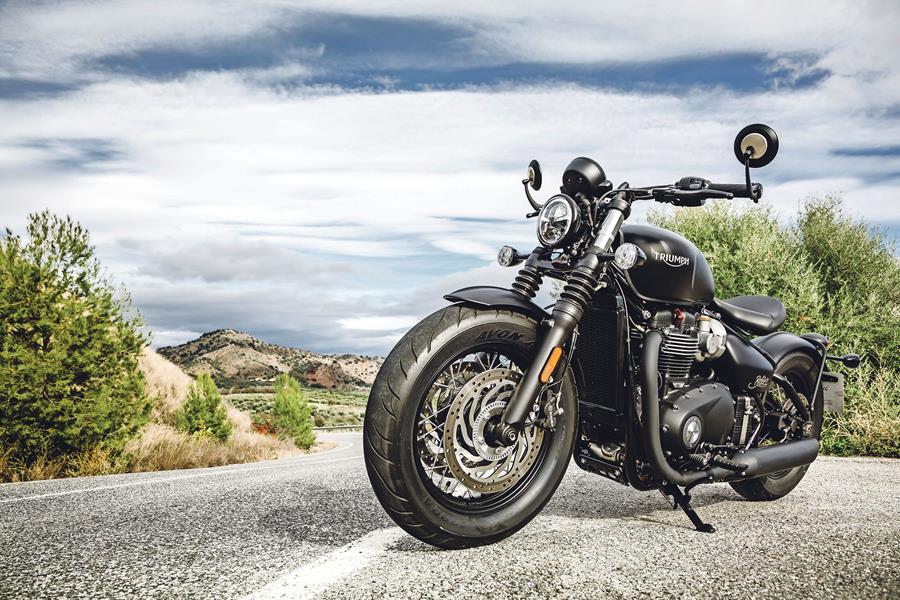
Triumph Bonneville Speedmaster (2002-2011)
The Speedmaster began based on the Bonneville 790, before growing to an 865cc motor from 2005. It has a low seat height, but the oddball styling, low power and poor pillion accommodation meant it was overlooked by some.
Read our in-depth Triumph Bonneville Speedmaster (2002-2011) review.
Triumph Bonneville Speedmaster (2011-2017)
A direct rival to Harley-Davidson’s Sportster models of the time, it featured a 60bhp parallel twin engine with fuel-injection. It was stable in a straight line, with surprisingly good cornering capabilities despite its raked-out proportions.
Read our in-depth Triumph Bonneville Speedmaster (2011-2017) review.
Triumph Bonneville Speedmaster (2018-on)
Think of this bike as a Bonneville Bobber with a little something extra. It’s powered by the same water-cooled parallel twin, with tech onboard including ABS, traction control, cruise control and two power modes.

There are feet-forward footpegs, swept-back bars and the same 16in wheels and twin front discs as the now discontinued Bobber Black.
It’s aimed at those looking for a chilled retro with the ability to take a pillion passenger, and has been criticised for long-range discomfort.
Read our in-depth Triumph Bonneville Speedmaster (2018-on) review.
Triumph Bonneville long-term tests
In 2017, former web producer Liam Marsden lived with Triumph’s Bonneville Bobber cruiser – travelling more than 8000 miles and sampling a number of optional accessories, including different handlebars.
- Related: Best cruisers as rated by MCN
Earlier, in 2015, designer Simon Relph spent a year with the Triumph Bonneville T100, modifying the bike with new rear shocks, and growing very attached across nine and a half months of riding.


























